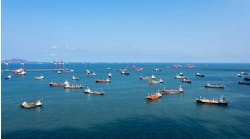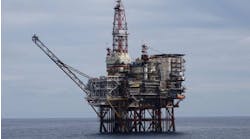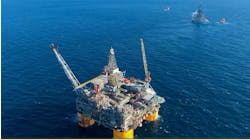Bruce Beaubouef • Houston
The National Commission on the BPDeepwater Horizon Oil Spill and Offshore Drilling investigation report was released to the public on Jan. 11, and some industry vendors are challenging its findings. While Halliburton says it continues to examine the report, it does disagree with some of the findings it has seen.
In short, the report made the following conclusions:
- The event could have been prevented.
- Deepwater exploration and production have risks for which neither the government nor industry is prepared.
- Fundamental reform is needed to assure human safety and environmental protection. Regulatory oversight of leasing, energy exploration, and production needs reform in both structure and decision making.
- Technology, laws and regulations, and practices for containing, responding to, and cleaning up spills lags behind the risk of deepwater drilling. Government must close the gap and industry must support rather than resist the effort.
- Scientific understanding of environmental conditions in sensitive environments is inadequate.
A complete version of the report is available athttp://www.oilspillcommission.gov/.
Halliburton’s initial disagreement is in regard to comments about the foam stability tests related to the cement pumped on the well. In general, Halliburton says, the commission selectively omitted information it provided concerning the amount of time required for the foam stability test to be completed.
Some deepwater drilling might move ahead
The Bureau of Ocean Energy Management, Regulation, and Enforcement (BOEMRE) says projects interrupted by the deepwater drilling moratorium in the Gulf of Mexico following the BP oil spill deserve special consideration in the approvals process.
The Wall Street Journal reports that the Obama administration says it would clear a path for the 13 companies with wells already approved and under way when the moratorium took effect. These 16 sites still will have to meet the new environmental review criteria prior to approval. This new move would not affect permit requests pending when the moratorium hit and those submitted since.
The continuing questions of what the criteria are and when any required federal inspections of the plans and/or equipment to be used might take place are not addressed in this new move.
Production starts from the Balboa field
Apache Corp. reports that hydrocarbon production has begun at its Balboa field, located on East Breaks block 597 in the Gulf of Mexico. Initial gross flow rates have stabilized at approximately 30 MMcf/d of natural gas and 1,400 b/d of oil. Apache’s subsidiary is the operator of the field and holds a 50% working interest.
Balboa is located in estimated water depths of 3,350 ft approximately 130 mi south of Galveston, Texas. The field is a one-well development with a six-mile tieback to the Anadarko-operated Boomvang spar on East Breaks 643. The reservoir features oil-bearing sandstones with a natural gas cap. The well has been completed near the crest of the structure to optimize overall hydrocarbon recovery. This completion was designed to initially produce natural gas and liquids with increasing liquids and decreasing gas volumes throughout the life of the field.
“Subsea tieback technology has significantly improved the economics for deepwater developments by lowering the threshold for commercial accumulations,” said John Crum, co-chief operating officer and president–North America. “Through acquisitions completed in 2010, Apache now has both the capability in-house and the portfolio of properties in the deepwater Gulf of Mexico to exploit assets such as Balboa and add shareholder value.”
Apache assumed operatorship of Balboa with the acquisition of Mariner Energy in November 2010. The field commenced production on Dec. 28, 2010.
Technip wins gathering system contract
Enbridge Offshore Facilities LLC has awarded a contract to Technip for development of a gas gathering system in the Walker Ridge area of the Gulf of Mexico. Water depth is 7,000 ft (2,130 m). The contract covers engineering, fabrication, and installation of 160 mi (270 km) of steel catenary risers and pipelines as well as the installation of subsea equipment. Technip in Houston will manage the project. The pipeline and risers will come from the spoolbase in Mobile, Alabama. Installation is scheduled for 2113 using theDeep Blue pipelay vessel.
Apache provides P&A update
Apache Corp. reports that a subsea survey by an ROV in the vicinity of East Cameron block 278 platform B in the Gulf of Mexico is continuing in order to identify the source of a water disturbance identified on Sunday, Jan. 16. No sheen or other evidence of hydrocarbons were visible as of Jan. 18, the company said. Results of the ROV survey will determine the next steps in responding to the water disturbance.
Wells on the platform had not been in production for several years. Apache had initiated P&A operations when the water disturbance was sighted. Prior to shutting in the platform for P&A operations, the platform was processing approximately 20 MMcf/d from other facilities.
InterMoor opens new Morgan City facility
InterMoor, an Acteon company, has opened of its new 24-acre facility in Morgan City, Louisiana, announced InterMoor President Tom Fulton. This ISO 9001:2008 approved site contains a fabrication facility that includes two fabrication buildings, both with capabilities to design and produce comprehensive offshore mooring systems, subsea foundations and equipment. This facility has more than double the capacity of InterMoor’s former yard in Amelia, Louisiana.
Helix inks agreements for Deepwater Containment System
Helix Energy Solutions Group, Inc. has executed agreements for its Helix Fast Response System (HFRS) to be named as a spill response resource for the U.S. Gulf of Mexico in response plans submitted by oil and gas producers with state and federal authorities.
The HFRS centers on two vessels, theHelix Producer I and the Q4000, both of which played a key role in the BP Macondo spill response and are presently operating in the GoM.
Helix signed an agreement with Clean Gulf Associates (CGA), a non-profit industry group, making the HFRS available for a two-year term to CGA participants in the event of a GoM well blow out incident in exchange for a retainer fee. In addition to the agreement with CGA, Helix also has signed separate utilization agreements with 19 CGA participant member companies to date specifying the day rates to be charged should the solution be deployed.
“We are pleased to have reached agreements with a key group of industry players to provide the Gulf of Mexico’s first proven spill containment system and are honored by its the recent endorsement from BOEMRE Director Bromwich,” said Owen Kratz, CEO of Helix. “We firmly believe that our proven, industry-led solution is critical to establishing confidence in the industry’s ability to respond to potential blow out incidents in the region.”
Offshore Articles Archives
View Oil and Gas Articles on PennEnergy.com


